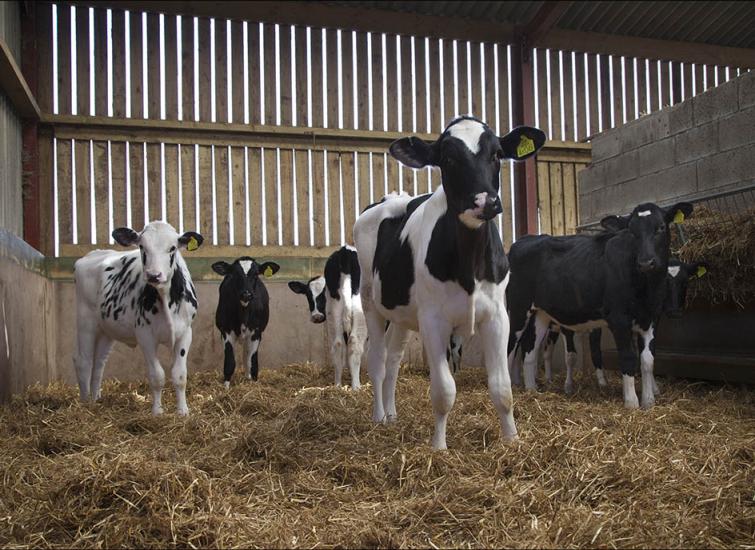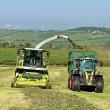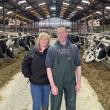Advanced Robot’s experience means they are always challenging me to get the best out of the cows, they maintain the herd’s health status whilst also improving performance.
Rethinking average age at first calving
Advanced Ruminant Nutrition’s Heifer Rearing Manager suggests a shift from relying solely on averages when evaluating heifer age at first calving and explains why producers should always interrogate data to get better results.

When it comes to measuring the success of a dairy farm, the average age at first calving (AFC) is often a key metric. However, the question arises: how accurate is the ‘average’ in truly reflecting the performance of a farm? We all know the benefits of targeting an AFC of 22-24 months, so why aren’t we seeing more consistency across units? Scientific research continues to support the expectation of improved performance when calving heifers at 24 months of age. The impact of which, can be seen in the table below. Despite this, we still see variations in AFC on dairy units, and the UK average remains around 26 months of age. By comparing averages alone, though, we aren’t seeing a true representation of a dairy’s heifer rearing process.

Our experience shows that the ‘average’ alone doesn’t necessarily reflect the true profitability and productivity of these farms. In fact, if we were to compare two Holstein units with similar numbers of cows, who both have an AFC of 24 months, we would see quite a difference in their outputs. This is because there is a real importance in considering the range in AFC, as well as the farm’s feeding and management protocols, for a comprehensive understanding of whole heifer rearing system.

The table to the above clearly displays the financial benefits that an increase in heifer yield brings, and also highlights the potential differences between two farms with the same average AFC. “As we see increases in 1st and 2nd lactation milk yields when heifers calve around 24 months, achieving the industry target of 82% of mature cow yield can be supported through earlier AFC. When interpreting farm data, it is crucial that we analyse
the reasons for heifers exceeding 24 months and address them. Factors such as diet composition, growth rates, facilities, and fertility protocols, are discussed and we highlight areas of improvement to generate an increase in productivity and reduction in calving age.
Frame development
Heifers reach puberty at 50% of mature body weight, and this can be achieved through either skeletal and lean muscle development, or through excess body condition. As we are aiming to produce a strong and robust heifer, that is ready to breed at 13-14 months of age, it is essential that we promote frame development early, as 50% of skeletal development happens within the first 6 months of life. This is also the most cost-effective growth period, and will have a huge impact on her performance as a lactating heifer. Implementing an effective growth strategy from birth through to calving is key to narrowing the range of AFC, reducing calving difficulties, improving lactational performance, and producing high-quality, long-lasting heifers. In addition, new research suggests that we tailor growth rates to feed conversion efficiency and cost of growth, a practice that can maximise return on investment while enhancing heifer fertility and survivability.
Typical targets for maiden heifer breeding includes a submission rate of >80% and a conception rate of > 60%. Farms may struggle to meet these targets, particularly when heifers are turned out in the spring, are housed away from home, or if they are short on time and/or staff. Attention to heat detection is crucial, with some farms incorporating technology like RMS or collars for the milking herd but neglecting the heifers. Maiden heifers are genetically superior to the cows currently in milk, so setting protocols during this critical time and ensuring they don’t surpass 13-14 months at first service means that they can express their genetic potential, leading to improved overall fertility and a tight range of calving. Our Advanced Heifer program and in-depth reports look at several performance indicators including AFC, the range of calving age, cull rates, heifer yields and overall heifer health and performance, from birth to transition into the milking herd. It’s the harnessing of all this information, together with our whole-farm approach, which enables us to analyse specifics and give a true reflection of the whole heifer rearing system. Comparing averages gives us some knowledge, but not enough to make a significant difference.
By implementing effective growth strategies, focusing on fertility, and leveraging advanced data analysis, dairy farmers can optimise their return on investment and ensure the long-term success of their operations.
〈 BACK




